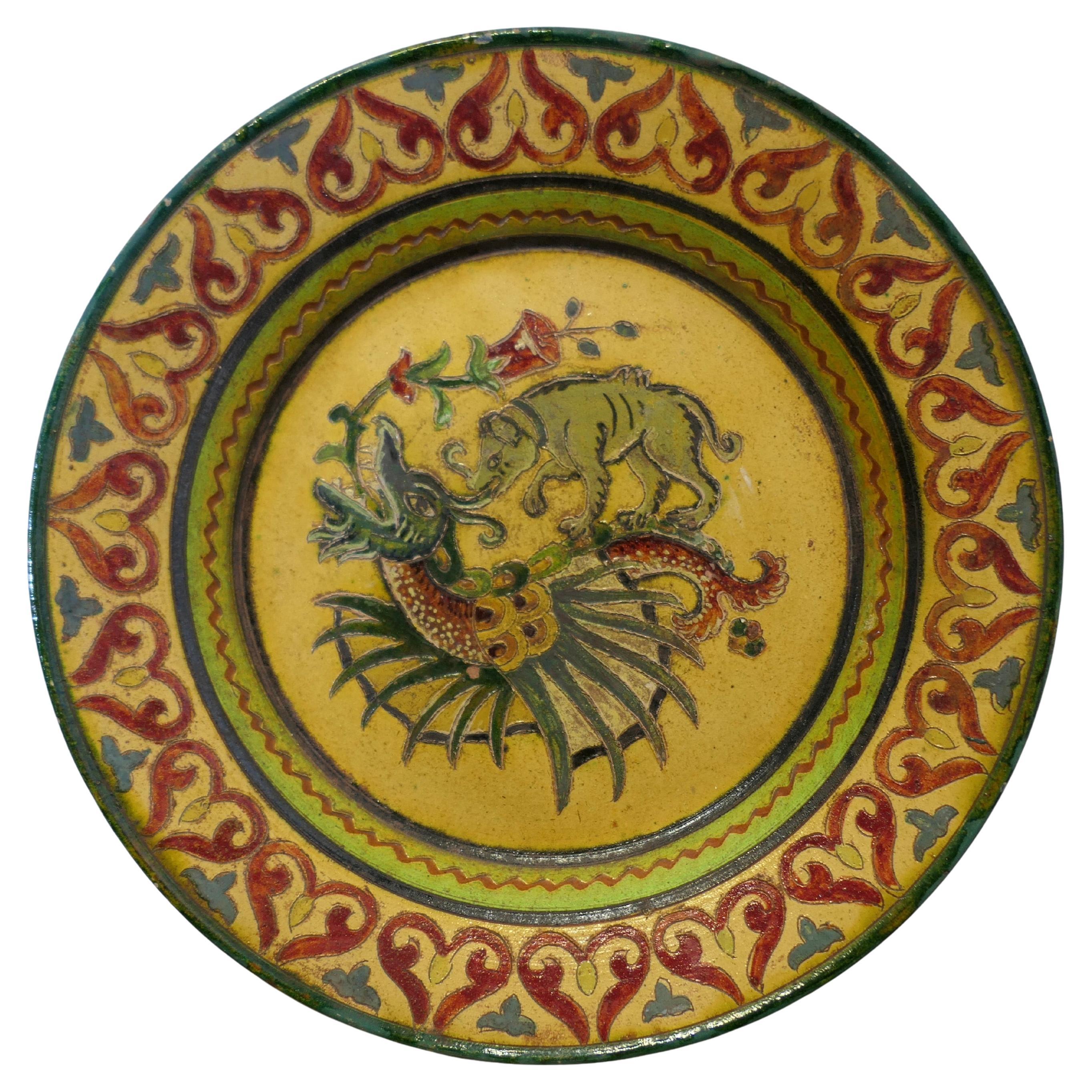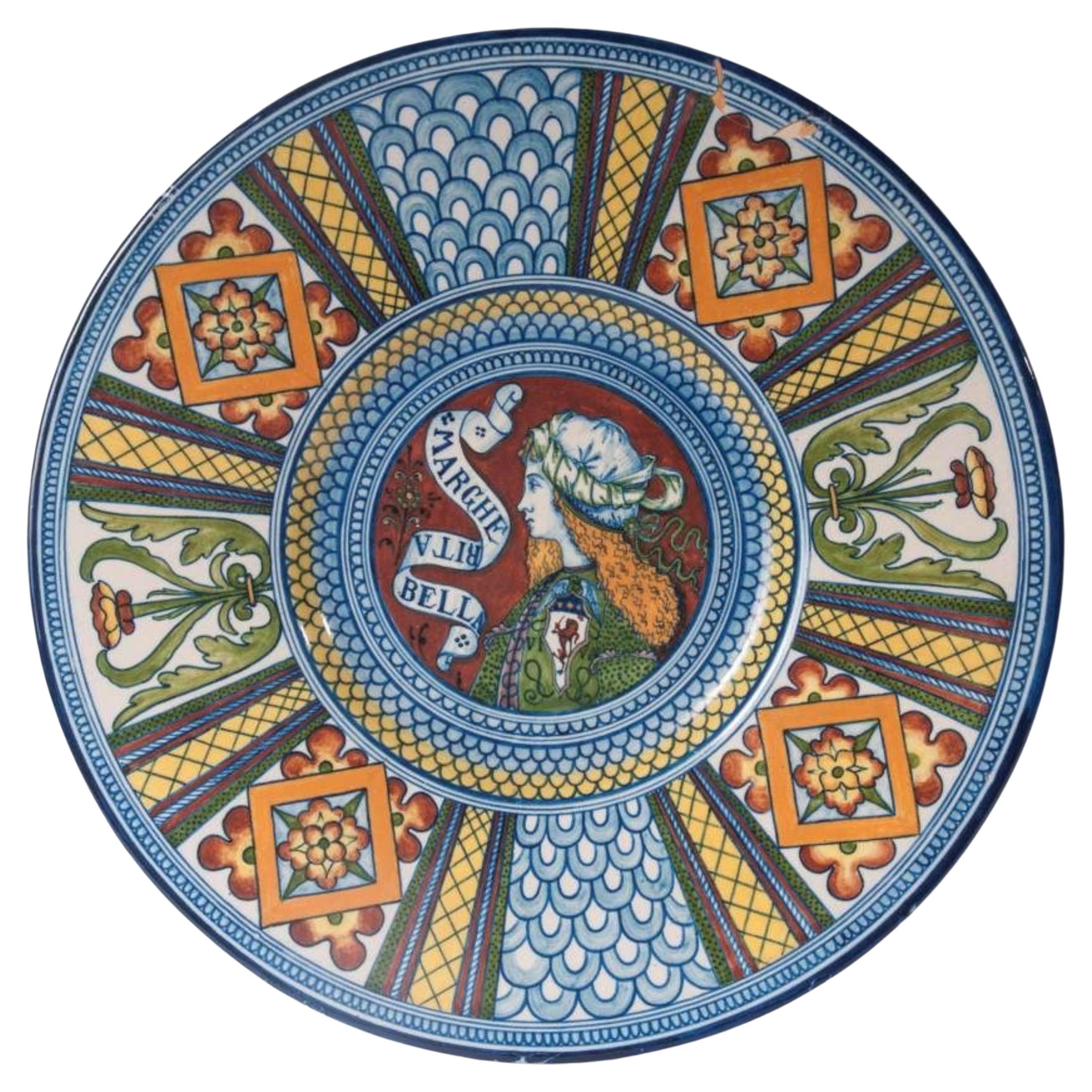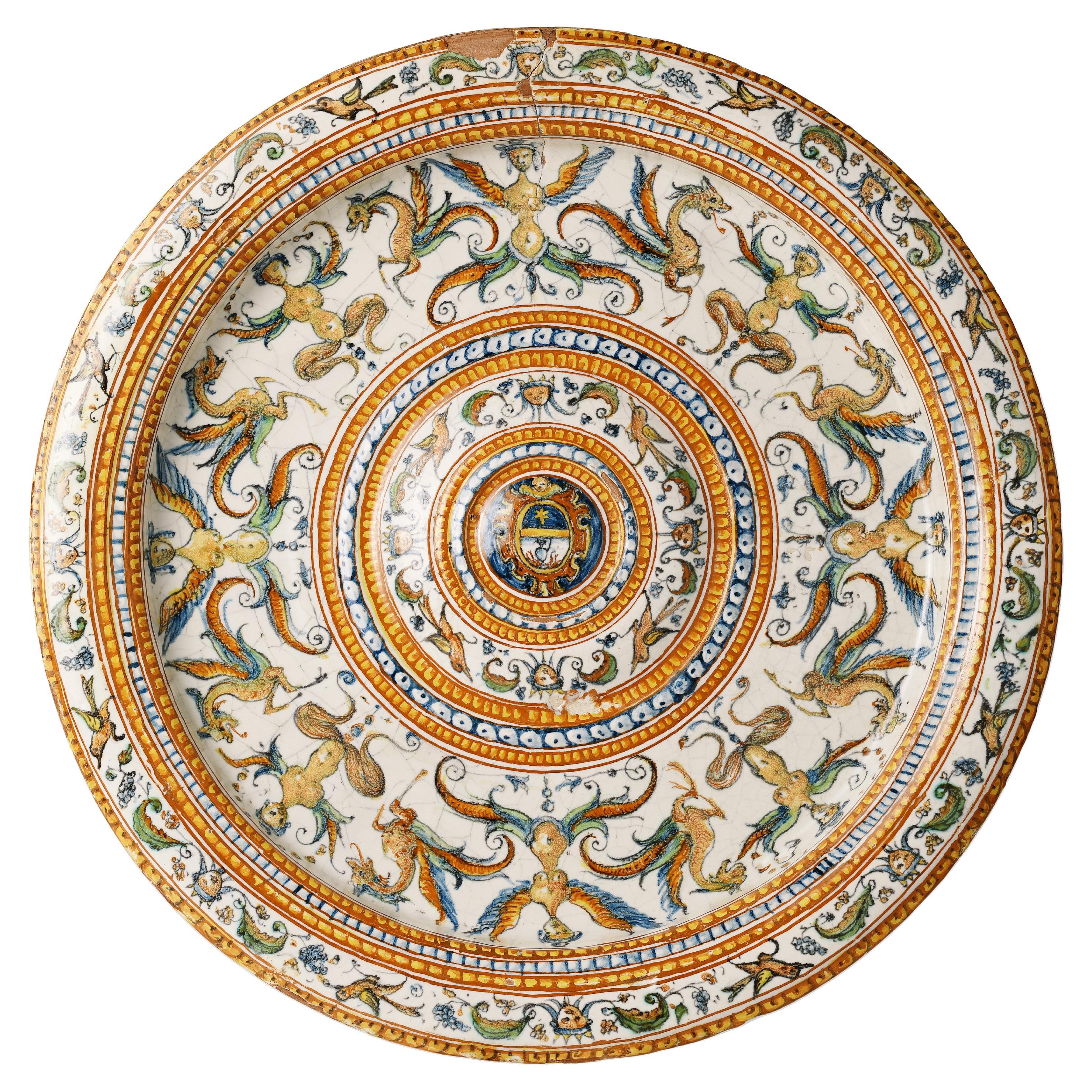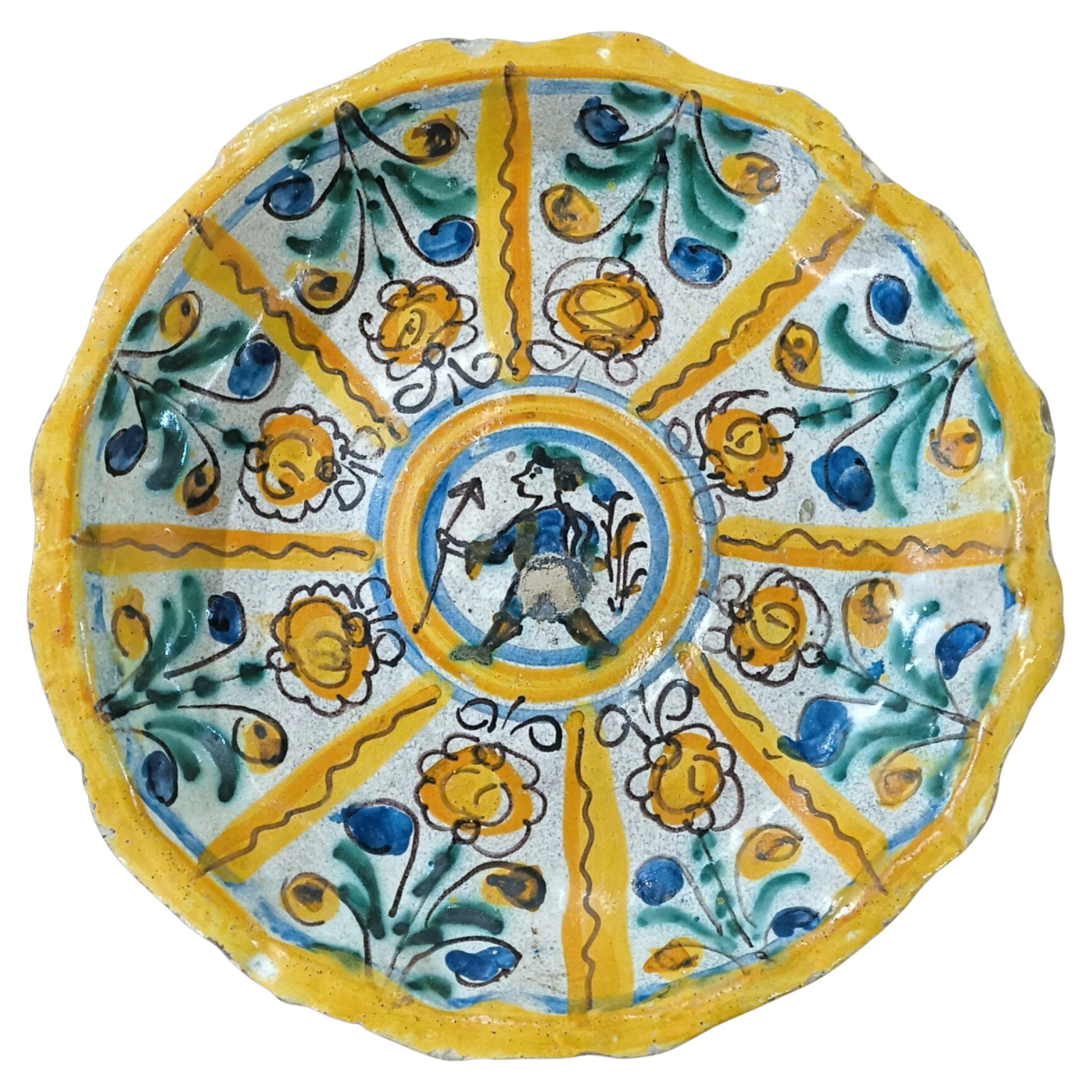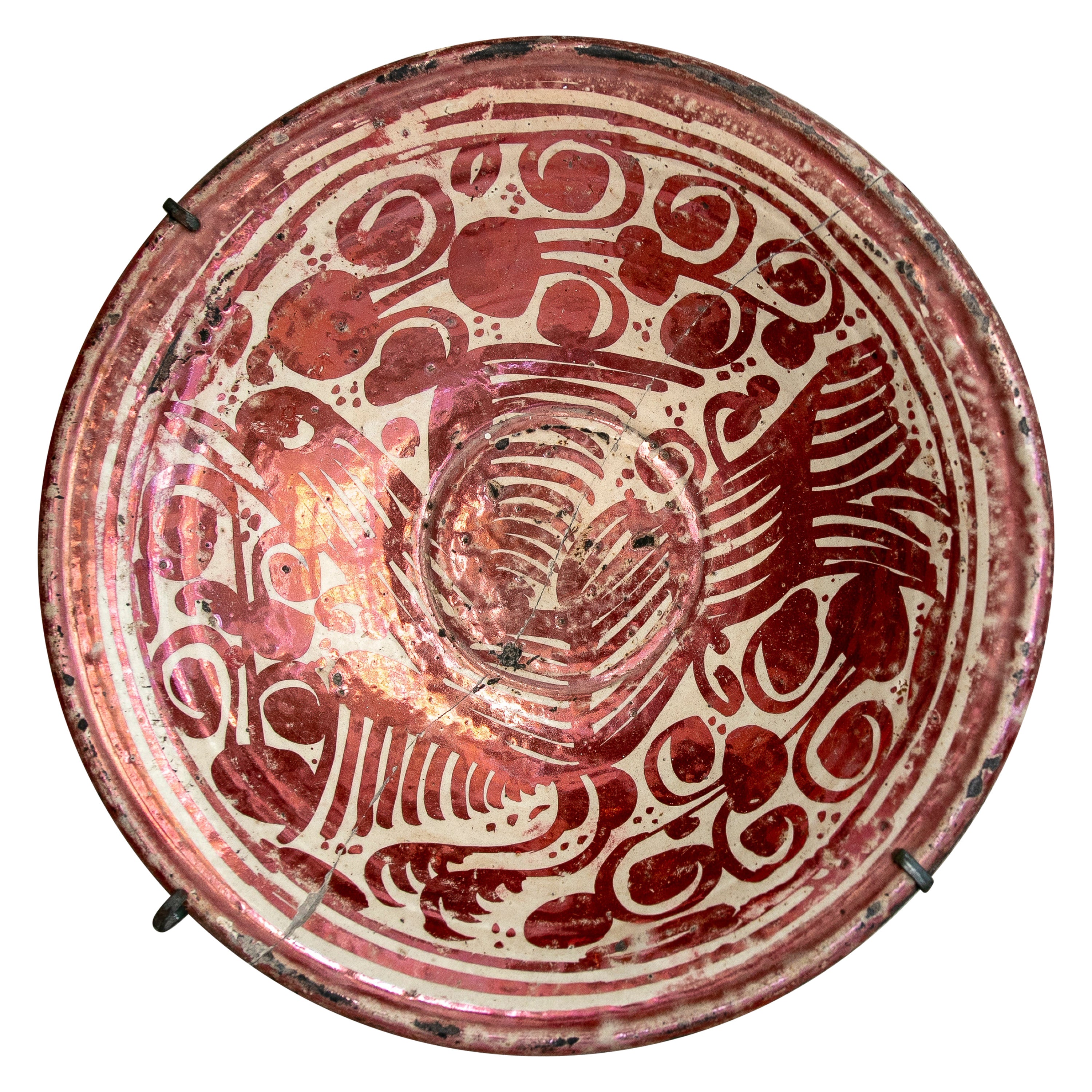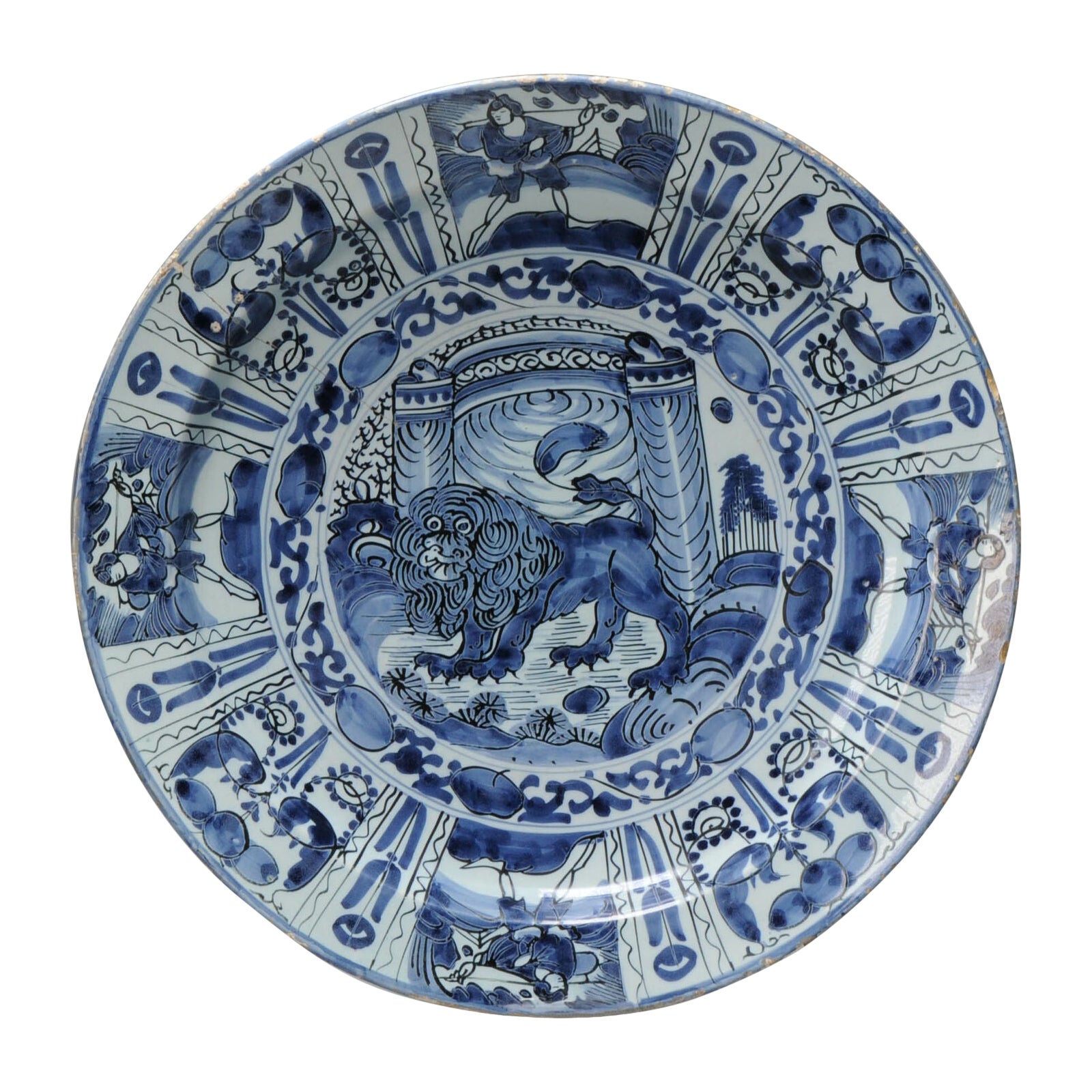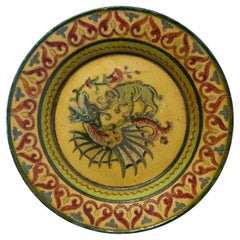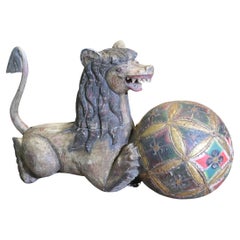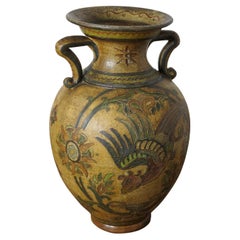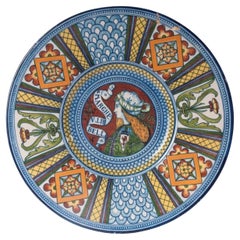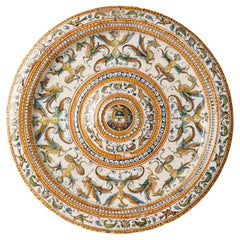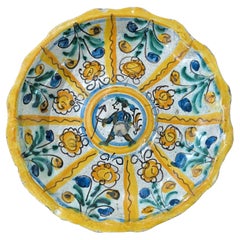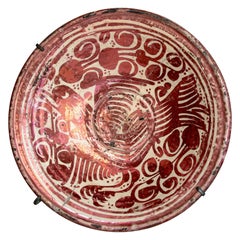Items Similar to Montopoli Arno Italian Plate with a Lion
Want more images or videos?
Request additional images or videos from the seller
1 of 7
Montopoli Arno Italian Plate with a Lion
$544.32
£400
€469.93
CA$747.80
A$834.85
CHF 437.45
MX$10,219.37
NOK 5,555.60
SEK 5,238.22
DKK 3,507.16
Shipping
Retrieving quote...The 1stDibs Promise:
Authenticity Guarantee,
Money-Back Guarantee,
24-Hour Cancellation
About the Item
Montopoli Arno Italian Plate with a Lion
An unusual piece made in terracotta marked Montopolyi Arno, the plate is a very attractive piece relief decorated with a Lion like creature
In sound condition the plate is 12” in diameter
ZX94
- Dimensions:Height: 2 in (5.08 cm)Diameter: 12 in (30.48 cm)
- Style:Folk Art (Of the Period)
- Materials and Techniques:
- Period:
- Date of Manufacture:1960
- Condition:
- Seller Location:Godshill, GB
- Reference Number:Seller: ZX941stDibs: LU2498342096992
About the Seller
4.9
Gold Seller
Premium sellers maintaining a 4.3+ rating and 24-hour response times
Established in 1980
1stDibs seller since 2017
875 sales on 1stDibs
Typical response time: <1 hour
- ShippingRetrieving quote...Shipping from: Godshill, United Kingdom
- Return Policy
Authenticity Guarantee
In the unlikely event there’s an issue with an item’s authenticity, contact us within 1 year for a full refund. DetailsMoney-Back Guarantee
If your item is not as described, is damaged in transit, or does not arrive, contact us within 7 days for a full refund. Details24-Hour Cancellation
You have a 24-hour grace period in which to reconsider your purchase, with no questions asked.Vetted Professional Sellers
Our world-class sellers must adhere to strict standards for service and quality, maintaining the integrity of our listings.Price-Match Guarantee
If you find that a seller listed the same item for a lower price elsewhere, we’ll match it.Trusted Global Delivery
Our best-in-class carrier network provides specialized shipping options worldwide, including custom delivery.More From This Seller
View AllMontopolyi Arno Italian Plate with Dragon and Bear An unusual piece
Located in Godshill, Isle of Wight
Montopolyi Arno Italian Plate with Dragon and Bear
An unusual piece made in terracotta marked Montopolyi Arno, the plate is a very attractive piece relief decorated with plants, a b...
Category
Vintage 1950s Folk Art Decorative Bowls
Materials
Terracotta
Large Carved and Painted Temple Lion, Pixiu or Foo Dog
Located in Godshill, Isle of Wight
Large Carved and Painted Temple Lion, Pixiu or Foo Dog
This fierce looking beast dates from the 19th Century, he is carved in wood and was originally painted Much of the paint 1s fad...
Category
Antique 19th Century Folk Art Sculptures and Carvings
Materials
Teak
Montopolyi Arno Italian Vase with Dragons An unusual piece made in terracotta
Located in Godshill, Isle of Wight
Montopolyi Arno Italian Vase with Dragons
An unusual piece made in terracotta marked Montopolyi Arno, the vase a very attractive piece relief decorated with plants and flying crea...
Category
Vintage 1950s Folk Art Vases
Materials
Terracotta
Montopolyi Arno Italian Vase with Winged Guardians An unusual piece
Located in Godshill, Isle of Wight
Montopolyi Arno Italian Vase with Winged Guardians
An unusual piece made in terracotta marked Montopolyi Arno, the vase a very attractive piece relief decorated with plants and 4 ...
Category
Vintage 1950s Folk Art Vases
Materials
Terracotta
Arch Top Fire Back, Crown, Shield, Cross and Lions
Located in Godshill, Isle of Wight
Arch Top Fire Back, Crown, Shield, Cross and Lions
The fire back has a large shield in the centre this has a Celtic Cross and a crown over the top with a rampant Lion on either side...
Category
Vintage 1930s Gothic Revival Architectural Elements
Materials
Iron
Oriental Folk Art Carved Dragon Tray This Is a Lovely Piece of Hand Carving
Located in Godshill, Isle of Wight
Oriental Folk Art Carved Dragon Tray
This is a lovely piece of hand carving, the tray is octagonal with a dragon at every corner
A superb piece which neat handles carved into th...
Category
Antique Early 1900s Chinoiserie Serving Pieces
Materials
Teak
You May Also Like
Beautiful Massimo Popper Plate, 1911/1914, 20th Century
By Europa
Located in Madrid, ES
Beautiful Massimo Popper Plate, 1911/1914, 20th Century
Pompous polychrome ceramic "Marguerite" with a wide brim, short frill, and wide base. The rim is decorated with metopes and t...
Category
Early 20th Century Italian Baroque Decorative Art
Materials
Maiolica, Porcelain
Italian Renaissance Plate, Patanazzi Workshop Urbino, End of 16th Century
By Patanazzi Workshop
Located in Milano, IT
Acquareccia plate
Patanazzi workshop
Urbino, last quarter of the 16th century
It measures diameter 17.12 in; foot diameter 11.53 in; height 1.88 in (43.5 cm; 29.3 cm; 4.8 cm).
Weight
State of conservation: wear and a few small minimal detachments of enamel, chipping on the raised areas, peeling of enamel at the brim on the back.
This large, shallow basin is equipped with a wide and convex well. It is umbonate with a contoured center. The brim, short and flat, is enclosed in a double rounded and barely raised edge. The basin has a flat base without rims; it has a slightly concave center in correspondence to the well.
The shape takes inspiration from the basins associated with the metal forged amphora pourers that traditionally adorned the credenza. These were used from the Middle Ages to wash hands during banquets. Two or three people washed their hands in the same basin and it was considered an honor to wash one’s hands with an illustrious person.
The decoration is arranged in concentric bands with, in the center of the umbo, an unidentified shield on a blue background: an oval banded in gold with a blue head, a gold star and a field with a burning pitcher.
Rings of faux pods separate the center from a series of grotesque motifs of small birds and masks. These go around the basin and are, in fact, faithfully repeated on the brim. The main decoration develops inside the flounce of the basin, which sees alternating symmetrical figures of winged harpies and chimeras. The ornamentation, outlined in orange, green and blue, stands out against the white enamel background.
This decorative style, defined since the Renaissance as “grottesche” or “raffaellesche”, refers to the decorations introduced after the discovery of the paintings of the Domus Aurea towards the end of the fifteenth century. The discovery of Nero's palace, buried inside Colle Oppio by damnatio memoriae, occurred by chance when a young Roman, in 1480, fell into a large crack which had opened in the ground on the hill, thus finding himself in a cave with walls covered with painted figures.
The great artists present in the papal city, including Pinturicchio, Ghirlandaio, Raffaello, immediately visited these caves. The decorations found there soon became a decorative subject of immense success: the term grotesque , with the meaning of “unusual,” “caricatured,” or “monstrous,” was later commented by Vasari in 1550 as “una spezie di pittura licenziose e ridicole molto”( “a very licentious and ridiculous kind of painting”).
The decorations “a grottesche” also widely circulated in ceramic factories, through the use of engravings, variously interpreted according to the creativity of the artists or the requests of the client.
Our basin is reflected in similar artifacts produced at the end of the sixteenth century by the factories of the Urbino district. See the series of basins preserved in the main French museums, among which the closest in morphology is that of the Campana collection of the Louvre (Inv. OA1496); this however has a more complex figure decoration, while the decoration of our specimen is sober and with a watercolor style.
The style, sure in its execution, approaches decorative results still close to the works produced around the middle of the sixteenth century by the Fontana workshop. The decoration is closely linked to their taste, which later finds its natural outlet, through the work of Antonio, also in the Patanazzi workshop. Studies show the contiguity between the two workshops due to the kinship and collaboration between the masters Orazio Fontana and Antonio Patanazzi, both trained in the workshop of Guido Fontana il Durantino. It is therefore almost natural that their works, often created according to similar typologies and under the aegis of the same commissions, are not always easily distinguishable, so much so that the presence of historiated or “grottesche” works by Orazio is documented and preserved in Antonio Patanazzi's workshop. Given that the studies have always emphasized the collaboration between several hands in the context of the shops, it is known that the most ancient “grottesche” works thus far known, can be dated from 1560, when the Fontana shop created the so-called Servizio Spagnolo (Spanish Service) and how, from that moment on, this ornamentation became one of the most requested by high-ranking clients. We remember the works created for the Granduchi di Toscana, when Flaminio Fontana along with his uncle Orazio supplied ceramics to Florence, and, later, other commissions of considerable importance: those for the service of the Duchi d’Este or for the Messina Farmacia of Roccavaldina, associated with the Patanazzi workshop when, now after 1580, Antonio Patanazzi began to sign his own work.
Thus, in our basin, the presence of masks hanging from garlands, a theme of more ancient memory, is associated in the work with more advanced stylistic motifs, such as the hatching of the chimeras and harpies. These are found here on the front with the wings painted in two ornate ways. In addition, the theme of the birds on the edge completes the decoration along the thin brim and can be seen as representing an early style typical of the Urbino district during a period of activity and collaboration between the two workshops. Later, a more “doll-like” decorative choice, typical of the end of the century and the beginning of the seventeenth century, characterized the period of the Patanazzi workshop under the direction of Francesco.
Bibliography:
Philippe Morel, Il funzionamento simbolico e la critica delle grottesche nella seconda metà del Cinquecento, in: Marcello Fagiolo, (a cura di), Roma e...
Category
Antique 16th Century Italian Renaissance Ceramics
Materials
Maiolica
AMAZING PLATE MONTELUPO 17th Century
By FF Montelupo
Located in Madrid, ES
AMAZING PLATE MONTELUPO 17th Century
Round earthenware bowl with contours on a pedestal, polychrome decoration of a soldier in a frame of floral reserves.
Minor restorations.
Diame...
Category
Antique 17th Century Italian Baroque Decorative Art
Materials
Porcelain, Maiolica
17th Century Spanish Valencian Manises Lusterware Ceramic Plate
Located in Marbella, ES
Cerámica esmaltada con decoración de reflejo metálico
Se trata de una cerámica esmaltada, es decir, con un baño de esmalte blanco, muy puro en los mejores ejemplos, que se cuece en ...
Category
Antique 17th Century Spanish Ceramics
Materials
Ceramic
Unusual Dutch Delftware Earthenware Kraak Charger 'Lion of Juda', 17th Century
Located in Amsterdam, Noord Holland
Earthenware dish on footring. flat rim. Decorated in different shades of blue on a white tin glaze in Chinese Transitional style with the so called 'Lion of Juda' in a garden landsca...
Category
Antique 17th Century Chinese Decorative Dishes and Vide-Poche
Materials
Porcelain
$3,306 Sale Price
20% Off
Mid-century lion ceramic plate / vide poche, Italy 1970s
Located in Firenze, IT
Mid-century lion ceramic plate / vide poche
Italy 1970s
6 cm H
25 cm diam.
Conditions: good consistent with age and use. Signs of wear
Category
Vintage 1970s Italian Mid-Century Modern Decorative Dishes and Vide-Poche
Materials
Ceramic
